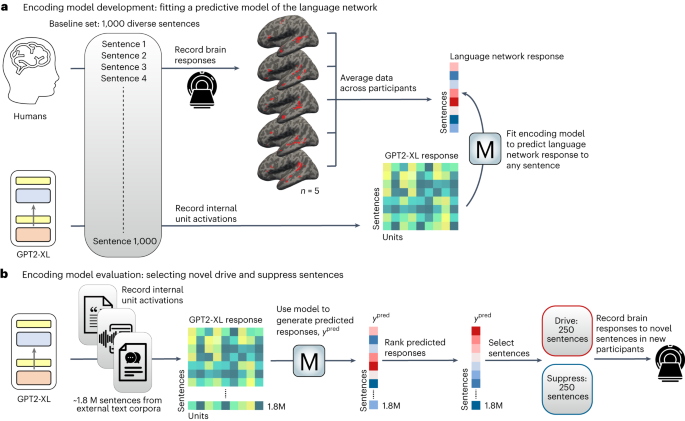preprint version because scihub doesn't have it yet https://www.ncbi.nlm.nih.gov/pmc/articles/PMC10120732/
Abstract
Transformer models such as GPT generate human-like language and are predictive of human brain responses to language. Here, using functional-MRI-measured brain responses to 1,000 diverse sentences, we first show that a GPT-based encoding model can predict the magnitude of the brain response associated with each sentence. We then use the model to identify new sentences that are predicted to drive or suppress responses in the human language network. We show that these model-selected novel sentences indeed strongly drive and suppress the activity of human language areas in new individuals. A systematic analysis of the model-selected sentences reveals that surprisal and well-formedness of linguistic input are key determinants of response strength in the language network. These results establish the ability of neural network models to not only mimic human language but also non-invasively control neural activity in higher-level cortical areas, such as the language network.


probably, but not necessarily in such a targeted way, without developing a similar dataset and model that associates fmri inferred activity with the modality of the stimulus you want to present to the subject
advertisers right now: